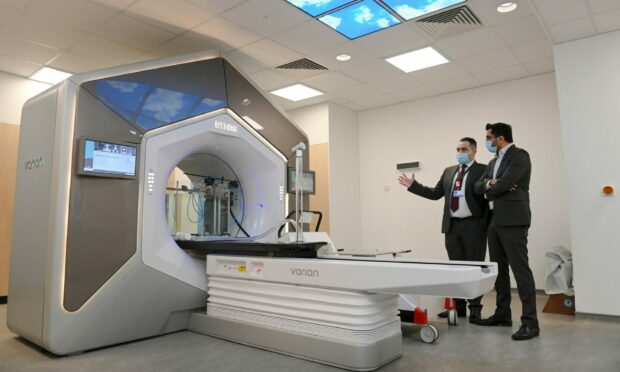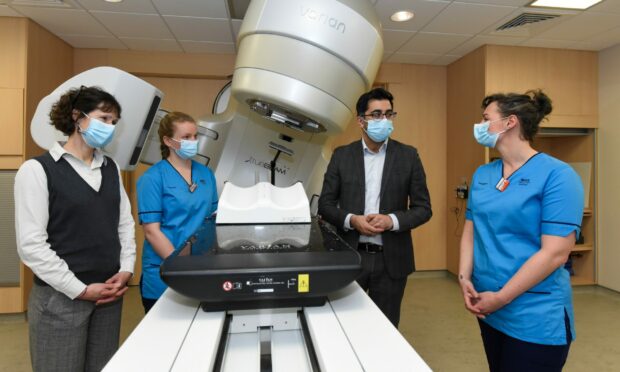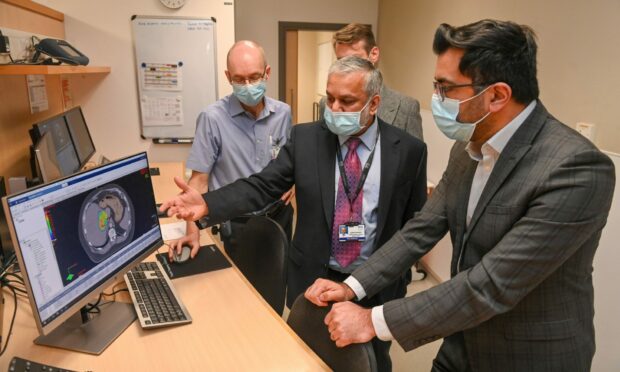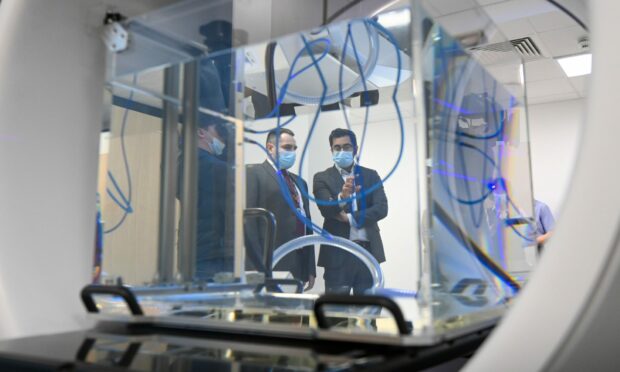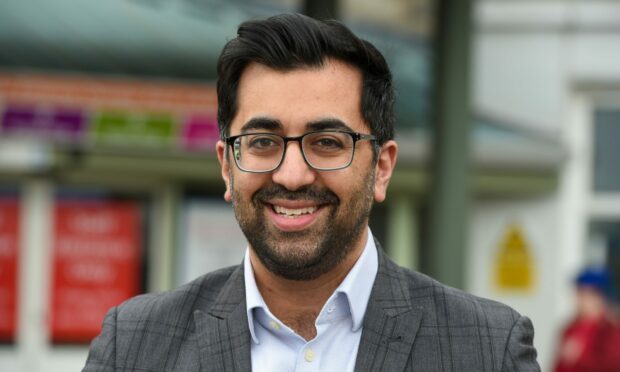Cancer patients in Aberdeen and Inverness are to get better access to high-tech radiotherapy that “wasn’t even feasible” just a few years ago.
Stereotactic ablative radiotherapy (SABR) allows for high doses to be given with extreme precision, lessening side effects and reducing recovery time.
The latest machines are capable of making the tiniest adjustments to account for the day-to-day changes in a patient’s body – right down to how full their stomach might be.
SABR has been used in Aberdeen since 2018, and the Health Secretary has announced a £1.5 million investment to roll it out further.
Cancer centres in Inverness, Aberdeen, Dundee, Edinburgh and Glasgow will all benefit from Humza Yousaf’s new 13-point National Radiotherapy Plan, announced today to boost the service through to 2025.
SABR tech is life-changing for patients
The new technology will change the lives of many patients – offering even more people “a life after a cancer diagnosis”.
Around 40% of people who require cancer treatment will get some form of radiotherapy – the second-most effective intervention after surgery.
SABR – pronounced “saber” – has been in use in Aberdeen since 2018, with around 80 patients benefitting annually.
But, with the new investment, this number is expected to at least double in the coming years.
Dr John McLellan, head of radiotherapy physics at Aberdeen Royal Infirmary, said: “This is giving patients new options for treatment they didn’t have previously.
“SABR is for disease that has limited spread and we can now offer many patients a cure or long-term palliation.
“It’s a big step forward.”
Additionally, the hospital is now home to the Varian Ethos – the first machine of its kind to be installed in Scotland, and third in the UK.
Dr McLellan explained: “This allows us to do bespoke treatments that adapt day-to-day to changes in the anatomy.
“One day their stomach might be a bit fuller, their anatomy isn’t quite the same as it was the day before.
“This machine has the computer power to adapt the treatment every single day so it can deliver even more precise treatments and avoid nasty side effects.”
Will this cut waiting times?
Mr Yousaf was shown the new machines during a visit to Aberdeen Royal Infirmary this week.
He said: “The tech I’ve seen here is the leading edge of innovation.
“The consultants were describing to me not just how innovative it is, but how this SABR treatment can improve lives quite considerably.”
The high-precision treatment means patients will need fewer sessions of radiotherapy, requiring less time in hospital as a result.
Mr Yousaf says this is crucial not just for cancer patients, but the NHS as a whole, as it recovers from Covid.
“Of course, the fewer number of times we can see people, and the shorter the period of time they need to stay in hospital, all helps with the accumulative pressure of the last two years,” he added.
“But I’ve also got to be up front and honest with people – the recovery for the NHS is not going to take a matter of weeks or even a few months.
“It’s going to take years, and innovation and investment in technology is a key and critical component.”
